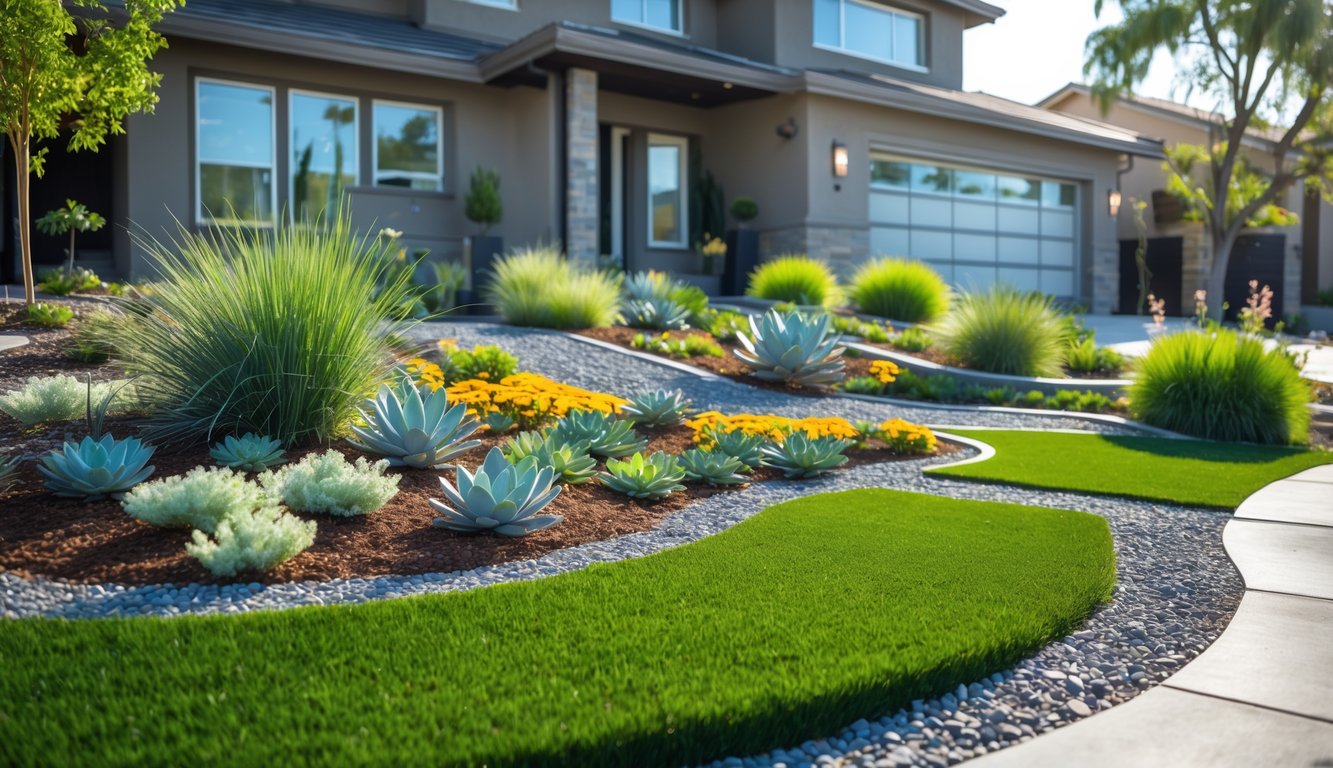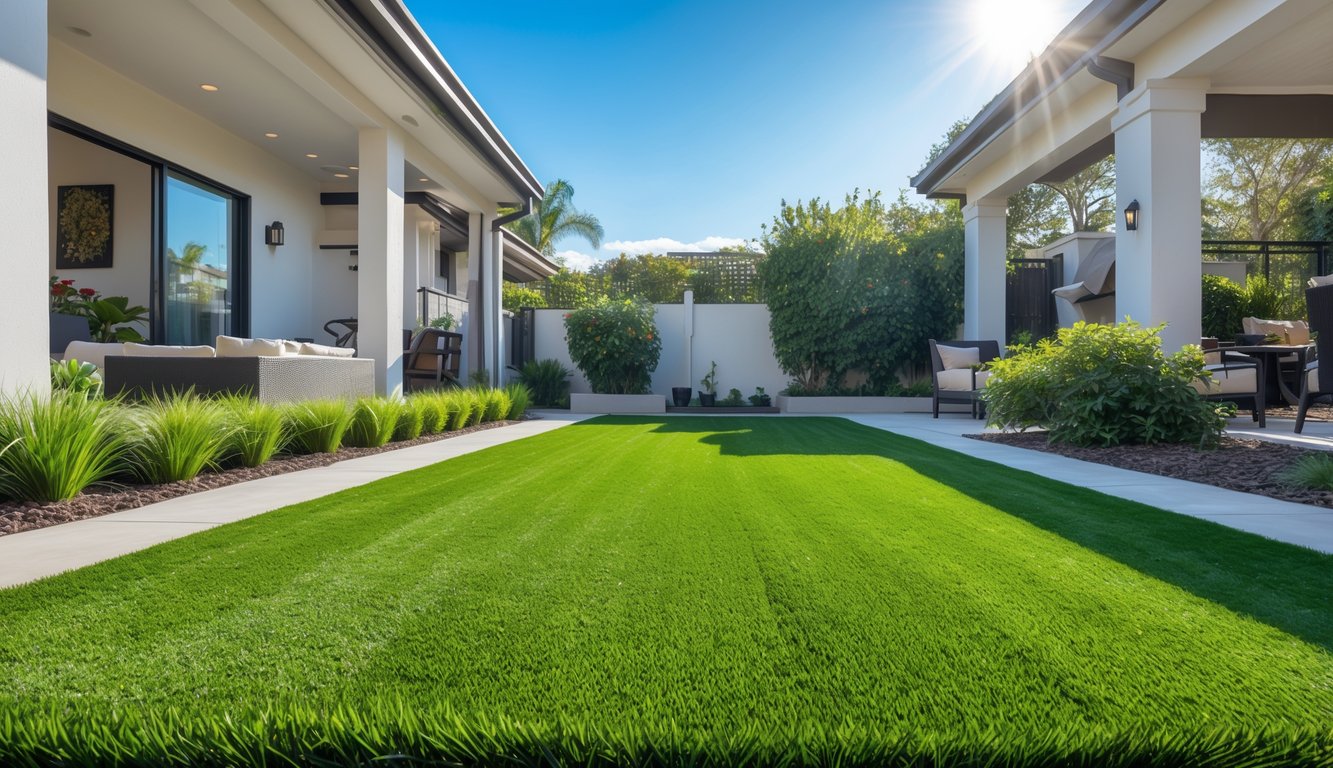
Artificial Turfs and Synthetic Grass Solutions

I keep circling artificial turf every time I hit the hardware store, which is probably a sign. I want to mow less, not get roasted by the HOA, and maybe, just maybe, stop hemorrhaging cash on water. Turf seems like a cheat code—no mud, no dead patches, and the dog can’t kill it in a single weekend. Tempting.
Types of Artificial Grass
Whenever I fall down the “low-maintenance lawn” Google rabbit hole, it’s just a mess of product names and fake-sounding brands. Polyethylene turf? Feels weirdly real. Like, if you don’t touch it, you’ll never know. Polypropylene is cheaper, stiffer, and, yeah, the sun nukes it pretty fast—nobody at the store tells you that unless you ask twice.
Nylon’s the tough guy—survives all the soccer balls and sun you can throw at it, but it’s pricey. Honestly, unless you’re running a pro field, it’s a hard sell. In Canada, everyone’s pitching “pet safe” turf, and yet, nobody ever admits you’re still picking up after your dog. You get every pile height, drainage option, and sun-shade compatibility you can dream up. It’s like ordering a haircut, but for your yard.
Pros and Cons for Homeowners
Supposedly you’ll save cash, but installation’s not something you can just wing. Skip the proper base and you’re wading through lumpy swamps after one winter. Stats say you can cut up to 70% off your water bill by switching, which sounds great, except some towns still charge you for “lawn maintenance.” Warranties run 8 to 20 years, but getting a company to honor one? Prepare for a marathon of emails and phone calls.
Weed killer, fertilizer, and mower gas basically disappear, which is a relief. But, wow, fake grass gets hot—like, “don’t walk barefoot at noon” hot. I saw a thermal photo once; it was 50°F hotter than dirt. And some HOAs will never stop calling it tacky. At least, if you sneeze every time you mow, this actually helps. That’s real.
Best Uses for Synthetic Lawns
If nobody’s using the front yard, or you’ve got those weird shady corners where grass never grew, turf makes sense. Pet runs, too. Playgrounds and rooftops? Only if you put down those squishy pads or you’ll hear about it from parents forever. Pool areas love turf because chlorine kills real grass, but, pro tip: don’t rest your grill there unless you want melted plastic.
I’ve seen restaurants slap turf on patios and brag about no-mud parties, which is kind of hilarious. Heavy furniture? Watch for dents unless you splurge on the ultra-dense stuff. Oh, and wild animals? They don’t care about fake grass, so raccoon parties move elsewhere—unless you forget to lock up the trash, then all bets are off.
Edible and Functional Lawn Alternatives
Here’s what bugs me—everyone whines about mowing, but nobody talks about the water bill or that one dead patch staring you down all summer. Turns out, swapping grass for something edible or actually useful saves cash, brings in bees, and your knees will thank you. It’s honestly easier than I thought. Why are grass fans so stubborn? I don’t get it.
Edible Gardens in Place of Grass
My neighbor ditched her sod six years ago and will not stop talking about how lettuce grows better than buffalo grass. I still remember her waving a colander of spinach at me, yelling about her “lawn” paying for groceries. “Foodscaping” sounds like a made-up word, but apparently it’s a thing—Morning Chores says it’s legit. Rip out turf, plant kale, strawberries, whatever doesn’t die when you forget to water, and suddenly your yard’s feeding you.
I barely remember to water, but these gardens need way less than a grass lawn, especially if you go for groundcover veggies or native stuff. If you stagger plantings, it even looks like you hired a designer. I’ve seen raised beds around old apple trees transform a dry wasteland into bee central. Soil stays loose, and you might even win the neighborhood tomato contest. The math just works: more food, less yardwork, fewer chemicals.
Herb Gardens
Ever seen someone mow a mint patch? Didn’t think so. Years ago, I tore up the north corner and threw in oregano, chives, thyme, lemon balm. It went wild. I gave away herbs every week. It’s weird—having fresh herbs at your feet changes how you cook, even if you’re just making ramen. Maintenance? Barely. Herbs choke out weeds, so you can skip the dandelion battle.
Positive Bloom claims clover and herbs together fix nitrogen and bring in pollinators. I believe it. A packet of seeds costs nothing compared to fertilizer and weed killer. Asked a landscaper what survives sun—he just said “parsley and oregano, always,” and that rosemary hedges can take anything. Way tougher than any fancy turf I’ve tried.
Chamomile Lawns
Chamomile is chaos. Somewhere online (can’t find it now), I read it survives trampling, sun, even mild drought. I doubted it, planted a patch, and, yeah, white flowers everywhere by June, plus the whole yard smelled like stale tea. Friends stomped all over it and it didn’t care. Local hort guy called it “chamomile matting”—no mowing, shrugs off gnats, and costs less than the fancy turf stuff.
Most lawns want water and fertilizer every week; chamomile barely needs a drink. The best part? Pick the flowers, dry them, boom—tea. It doesn’t fix bald spots if you drown it in clay, but in decent soil, it’ll grow where nothing else does. Native violets and dichondra do the edible groundcover thing too, but chamomile’s easier if you’re lazy and want something that looks good with zero effort. If it’s patchy, toss in some Viola banksii—edible, drought-proof, and weirdly resilient.
Managing and Maintaining Alternative Lawns
Nobody warns you: swapping out fescue for clover or buffalo grass means your Saturday mornings get weird. I spend less time mowing, but more time poking at odd spots, fighting new weeds, and trying not to overdo it with fertilizer. My coffee gets cold while I’m out there, and I’m still not sure if I’m doing it right.
Weed Management Strategies
Hand-pulling dandelions sounds cute until you’re six weeks in and your yard looks like a sci-fi set. Pre-emergent herbicides? Sometimes they nuke the wrong plants. I tried organic corn gluten—mixed results. Crabgrass hated it, violets didn’t care.
Creeping thyme and clover can crowd out weeds, but only if you actually plant enough. Mulch? Wild card. Birds toss it everywhere, and rain moves it. Mechanical weeders? Blades dull instantly—sharpen them or give up. I spot-spray vinegar on hot days, but it fries anything nearby, so, yeah, not perfect. Some landscaper (not the celebrity) once told me, “You’re only as weed-free as your worst neighbor.” He’s right. Neighbor’s weeds always invade.
Seasonal Care Tips
Fall feels like a break, but if you skip overseeding, sedges and fescues go bald. Spring? I’m just hovering, waiting for stuff to sprout, feeling like a helicopter parent. Warm-season grasses sleep in and make you panic that you killed everything.
Buffalo grass tricks you into ignoring it, then one heatwave and it’s toast. Most alternatives hate soggy roots, so I move mulch before storms. Wildflower lawns? Deadheading is a pain, but skip it once and you’re stuck with thistles. Weather never matches the calendar, so don’t trust the guides.
Fertilizers and Soil Health
Everyone acts like you can skip fertilizer with lawn alternatives. Lies. My soil test was a disaster—pH off, clover sulked. Tried Espoma Lawn Food (supposedly “organic”), but read that native blends want less nitrogen. Overdo it and thyme grows tall and stringy, not lush. Mycorrhizal inoculants? Actually worked—roots got beefy, soil held water, I was shocked.
Skip synthetics, but then you need compost or you’ll get weird deficiencies. Aerate every couple years, even if things look fine, or you’ll regret it. Fertilizer guides contradict themselves so much it’s exhausting. Soil Science Society says to fertilize less if things look healthy; too much messes with pollinators. Soil health is the whole game now, not just an afterthought.